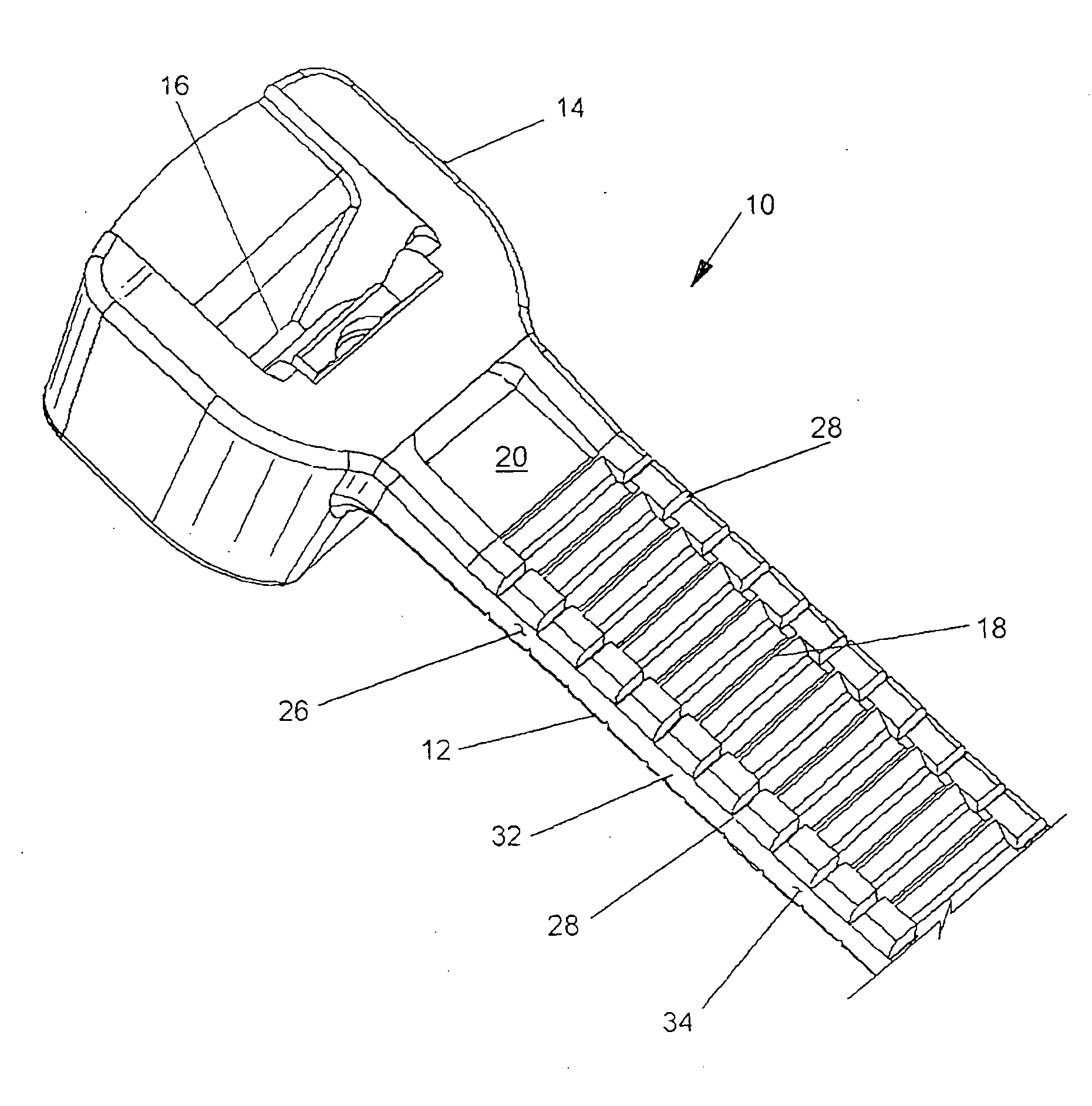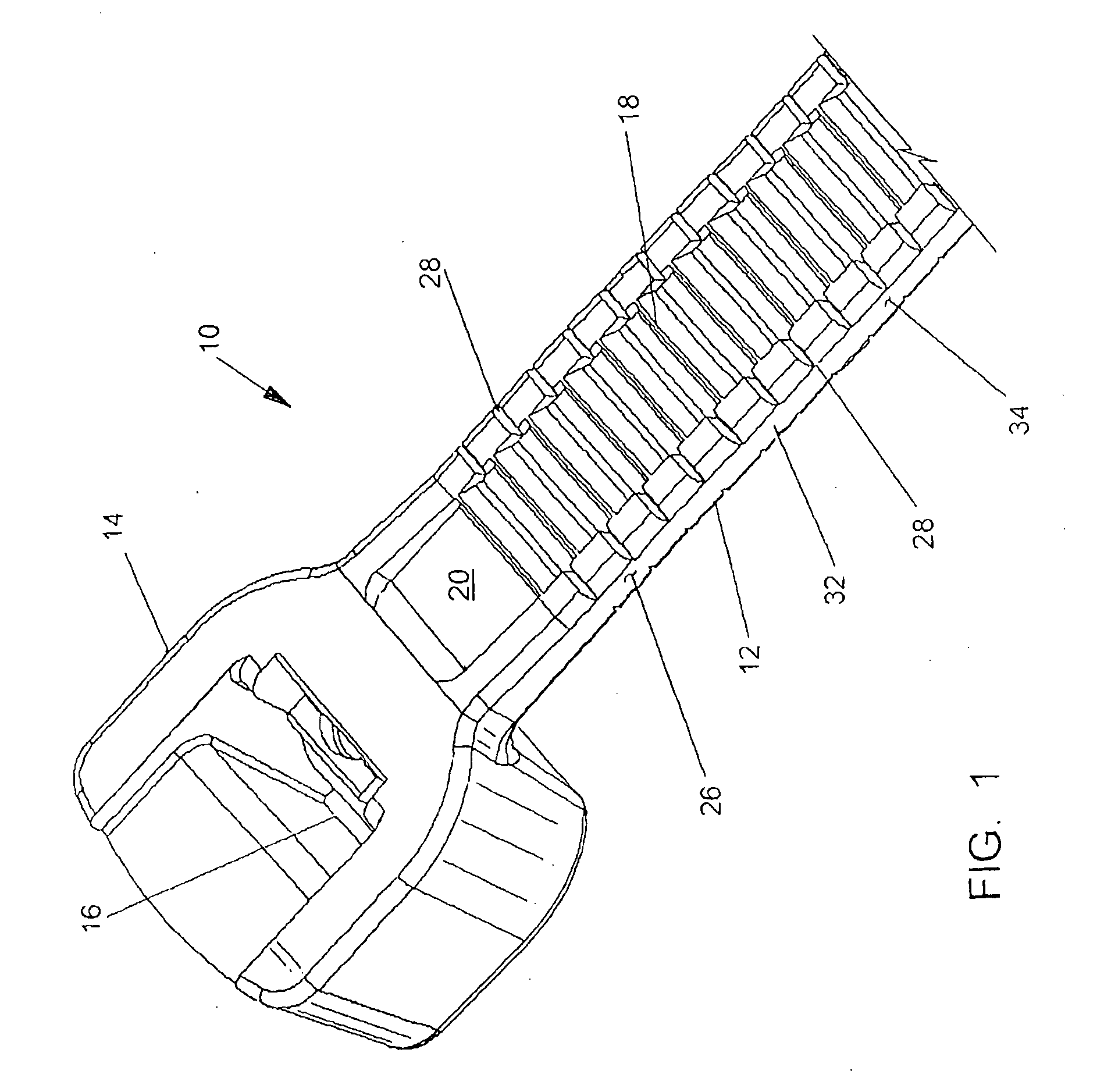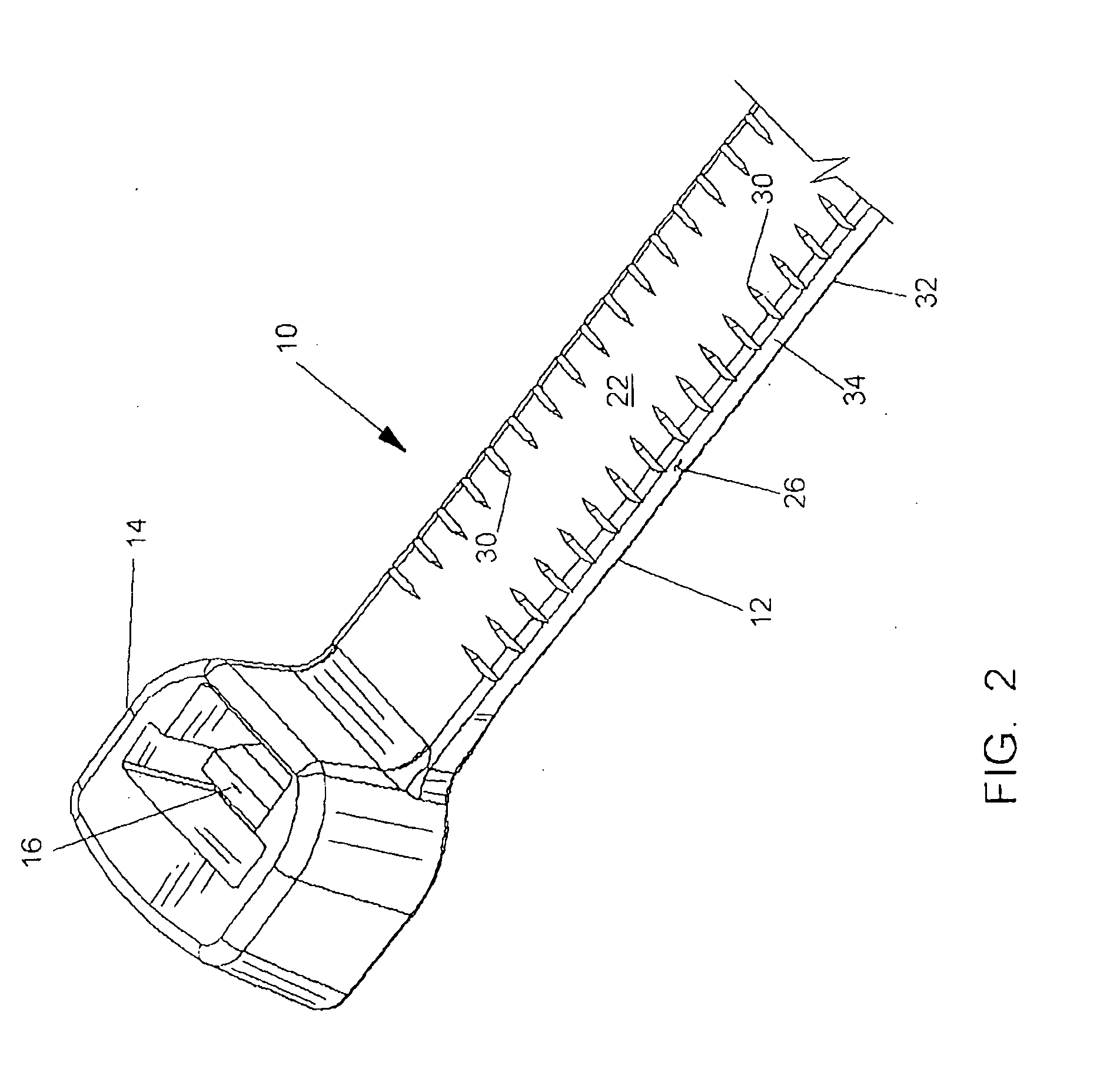Cable tie having detachable tail
a cable tie and tail technology, applied in the field of cable ties, can solve the problems of not being able to achieve the same rating of its unslitted twin, the method is not suitable for one-piece cable ties, and the technology is not readily transferable to one-piece cable ties
- Summary
- Abstract
- Description
- Claims
- Application Information
AI Technical Summary
Benefits of technology
Problems solved by technology
Method used
Image
Examples
Embodiment Construction
[0020]Referring to the drawings, there is shown one-piece cable tie 10 having a tail 12 forming all or a part of an elongated strap, a head 14 and a flexible pawl 16 all generally made of a suitable plastic material and generally manufactured by an integral molding process.
[0021]The parallel teeth 18 that run along a bottom surface 20 of tail 12 while FIG. 2 illustrates the generally smooth planar top surface 22 of cable tie 10. While such is the preferred embodiment, both sides of tail 12 could be configured with teeth 18 therein if desired.
[0022]Teeth 18 and pawl 16 of this embodiment are specially designed for one-way ratchet-type inter-engagement in order to keep cable tie 10 securely bundled or tensioned about cables and the like as is well known in the art.
[0023]The strap includes recesses 24 intermediate teeth 18. The recesses 24 are evenly spaced and permit a portion of pawl 16 to fit therein and engage one or more surfaces of teeth 18 so as to prevent tail 12 from being pul...
PUM
 Login to View More
Login to View More Abstract
Description
Claims
Application Information
 Login to View More
Login to View More - R&D
- Intellectual Property
- Life Sciences
- Materials
- Tech Scout
- Unparalleled Data Quality
- Higher Quality Content
- 60% Fewer Hallucinations
Browse by: Latest US Patents, China's latest patents, Technical Efficacy Thesaurus, Application Domain, Technology Topic, Popular Technical Reports.
© 2025 PatSnap. All rights reserved.Legal|Privacy policy|Modern Slavery Act Transparency Statement|Sitemap|About US| Contact US: help@patsnap.com



